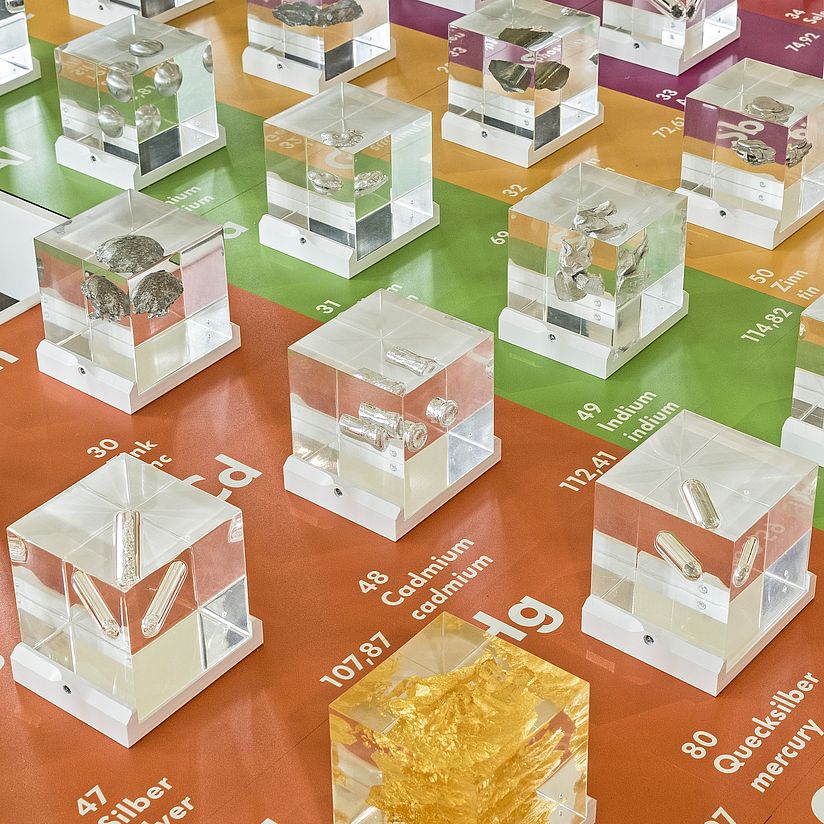
Photo: Deutsches Museum, München | Reinhard Krause Deutsches Museum;München
Chemistry
Transformation, experimentation and use
From taking a shower in the morning to eating a meal in the evening and even when we simply breathe: chemistry accompanies us everywhere. The shampoo, the salt in the soup, the air - basically we ourselves are made up of chemical substances. So the more we know about these substances, their structure, their properties and their transformation, the better we understand life itself. The knowledge we have gained has often proved to be both a curse and a blessing: fertilizers, plastics and nuclear power are just a few examples. At its best, we use chemistry to preserve, protect and improve our livelihoods.
Transformation, experimentation and use: The chemistry exhibition is initially divided into three major sections. Beginning with the historical laboratories, the experimental area follows with a visitor lab, hands-on boxes and the lecture hall. Behind this is the large exhibition hall with the theme islands Man and Chemistry, High-Tech Chemistry, Nutrition, Raw Materials & Industry, Analytics, Leisure & Sport and Building. Here, the chemistry behind the things of everyday life is shown. In addition, there is an extensive basics area that also uses many interactive elements to help visitors grasp this elementary natural science. And there is a dedicated children’s track!
“The combination of modern chemistry, historical laboratories and the interactive laboratory area in the new chemistry exhibition is unique in the world,” says curator Susanne Rehn-Taube. “Our visitors can experience spectacular experimental lectures here, trace the development of chemical laboratories since the late Middle Ages or carry out experiments themselves in a modern chemistry laboratory. The variety of topics is huge, we show chemistry in everyday life, in research and in industry, there is something for everyone!”
The exhibition was made possible by generous funding from the ‘Chemistry in Dialog’ (CID) initiative, in which many chemical companies have joined forces. Markus Steilemann, Chairman of the Board of CID, emphasizes, “Chemistry accompanies us in every aspect of our lives. Yet we are far too seldom aware of it. The Chemistry exhibition at the Deutsches Museum aims to change that by making this elementary natural science tangible for visitors in a variety of ways. We are happy to support this important project with our ‘Chemistry in Dialog’ initiative.”
“The Deutsches Museum needs the support of companies on a permanent basis - and I would like to expressly thank CID for its generous financial assistance,” says Director General Wolfgang M. Heckl. The initiative has supported the major project with five million euros. Heckl: “We need such initiatives - ever since the times of Oskar von Miller, the Deutsches Museum has only been able to finance its development and expansion with generous help from industry. Without the manifold donations, the modernisation of many exhibitions would not be possible at all. CID continues this long tradition.”
Facts and figures:
Location: level 1
Exhibition area: 1200 sqm
Demos and interactives: approx. 90
Dioramas: 2
Media stations: 29
Highlight: The crime scene diorama
Crime scene party cellar: What is that white powder on the table? And is that blood on the floor? Many things in this diorama point to a crime. Of course, chemical analysis helps to solve the mystery...
